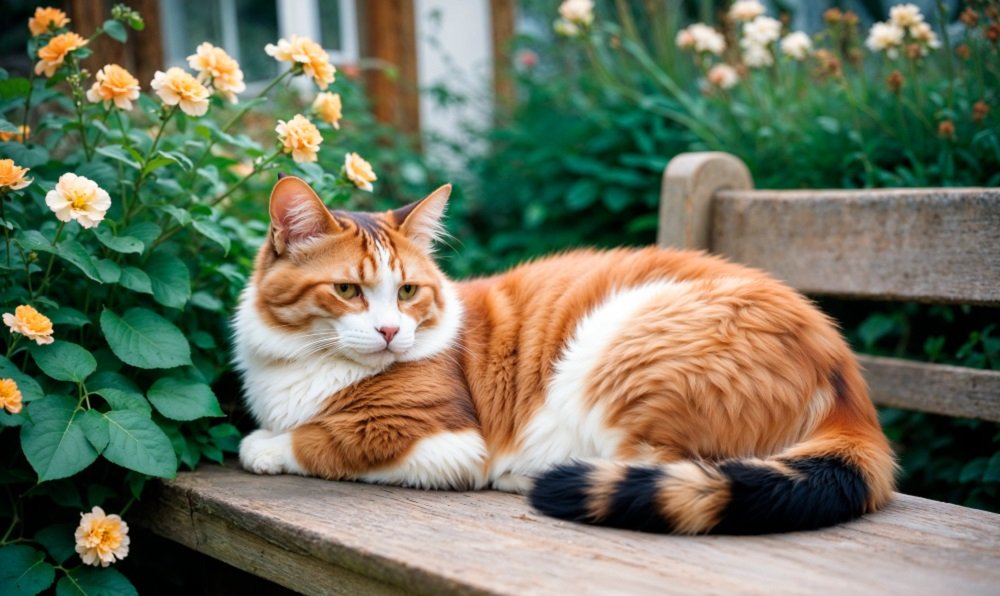The color of a cat’s fur is determined by genetics, and certain colors are more common than others. One such color that often sparks curiosity is orange, particularly in female cats. Understanding why orange female cats are relatively rare offers a fascinating glimpse into the world of feline genetics.
Why Are Orange Female Cats Rare?
The rarity of orange female cats stems from the way the gene for orange fur is linked to the X chromosome. This means that the gene responsible for producing orange pigment is located on the X chromosome.
X-Chromosome Inheritance
Female cats have two X chromosomes (XX), while male cats have one X and one Y chromosome (XY). To express the orange fur trait, a female cat needs two copies of the orange gene, one on each X chromosome. Male cats, on the other hand, only need one copy of the orange gene on their single X chromosome to display orange fur.
Why Are Orange Female Cats Rare?
The vibrant orange coat of a feline friend is a captivating sight, often associated with playful personalities and a touch of mischief. However, you’ll notice a distinct pattern when observing orange cats: they are predominantly male. This begs the question: why are orange female cats so rare? The answer lies in the fascinating world of genetics and the X chromosome.
The Genetics Behind Coat Color
The color of a cat’s fur is determined by genes, specifically those located on the X chromosome. The gene responsible for orange coloration is called the “O” gene. Cats have two sex chromosomes, just like humans, with females possessing two X chromosomes (XX) and males possessing one X and one Y chromosome (XY). (See Also: How Rare Are Orange Eyes In Cats)
X-Linked Inheritance
The O gene is X-linked, meaning it is carried on the X chromosome. This inheritance pattern has significant implications for coat color in cats. Here’s how it works:
- Female cats (XX) need two copies of the O gene, one on each X chromosome, to express the orange coat color. If a female cat inherits one O gene and one gene for a different color (such as black or tabby), she will likely display a tortoiseshell or calico pattern, a beautiful mix of orange and other colors.
- Male cats (XY) only need one copy of the O gene on their single X chromosome to express the orange coat color. If they inherit the O gene, they will be orange. If they inherit a different color gene, they will not be orange.
The Probability of Orange Female Cats
Given this X-linked inheritance pattern, the probability of a female cat being orange is significantly lower than that of a male cat. For a female to be orange, both her parents must contribute the O gene. This is less likely to happen compared to a male inheriting the O gene from his mother.
Other Factors Influencing Coat Color
While genetics plays the primary role in determining coat color, other factors can influence the expression of the orange gene:
- Breed:** Certain breeds, such as Siamese and Persians, are less likely to exhibit the orange coat color due to variations in their genetic makeup.
- Environmental Factors:** Nutrition and exposure to sunlight can slightly affect the intensity of a cat’s orange coloration.
Conclusion: A Rare and Beautiful Sight
The rarity of orange female cats is a testament to the intricate workings of genetics. The X-linked inheritance of the orange gene makes it statistically less likely for females to inherit two copies of the O gene. While they may be uncommon, orange female cats are a truly special sight, showcasing the beauty and diversity of the feline world.
In summary, the article explored the reasons behind the rarity of orange female cats. It delved into the role of the X chromosome and X-linked inheritance, explaining how the orange gene is passed down from parents to offspring. It also touched upon other factors that can influence coat color, such as breed and environmental conditions. The article concluded by emphasizing the unique beauty and rarity of orange female cats. (See Also: How To Get Rid Of Ants Safe For Cats)
Why Are Orange Female Cats Rare?
Is it true that orange cats are mostly male?
Yes, it’s true! Orange fur color in cats is linked to the X chromosome. Female cats have two X chromosomes, while male cats have one X and one Y chromosome. The gene for orange fur is located on the X chromosome. A female cat needs two copies of the orange gene (one on each X chromosome) to have orange fur, while a male cat only needs one copy (on his single X chromosome).
What are the chances of a female cat being orange?
The chances of a female cat being orange are significantly lower than a male cat. It’s estimated that only about 1 in 100 orange cats are female.
Why is the orange gene more common in males?
Because the orange gene is carried on the X chromosome, it’s more likely to be expressed in males. Since males only have one X chromosome, if they inherit the orange gene, they will be orange. Females, on the other hand, need two copies of the gene to be orange, making it less common.
Can two orange cats have a non-orange kitten?
Yes, absolutely! If both parents are orange, they could both carry the gene for non-orange fur. This means that their kittens could inherit a combination of genes that result in a non-orange coat color. (See Also: How To Know If Your Cats Tail Is Broken)
Are there any other factors that influence fur color in cats?
Yes, besides the orange gene, other genes contribute to a cat’s overall fur color and pattern. These can interact with the orange gene, leading to variations in shade and markings.


